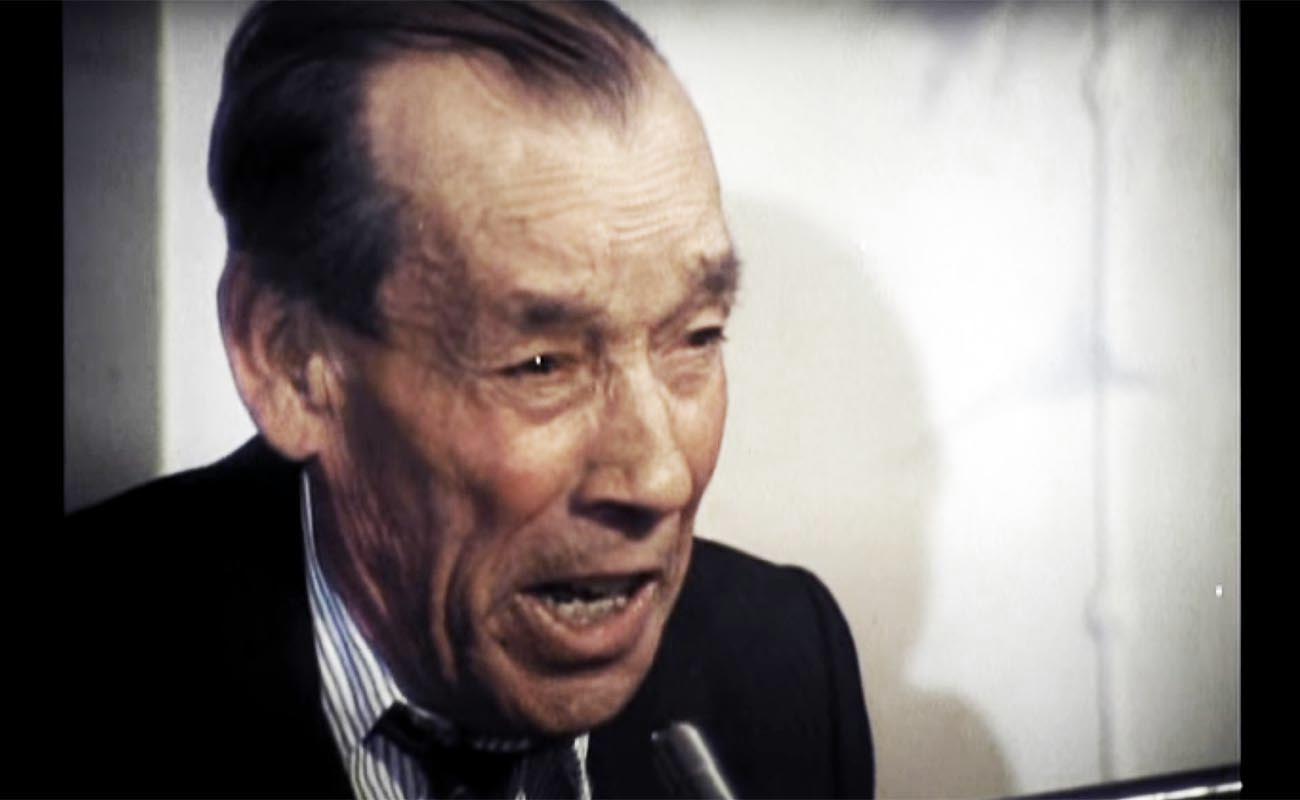Joselero de Morón remembered
As almost everyone knows, Joselero from Morón was neither named José nor was he from Morón. Luis Torres Cádiz was born in La Puebla de Cazalla in 1910 to parents from Osuna and Estepa. He lived in Morón for forty years, from adolescence, working as a street vendor of lace and sewing items.

I met him for the first time at the Fonda Pascual in front of the Town Hall where newly-arrived foreigners to Morón de la Frontera would check in. Luis Torres Cádiz, “Joselero”, was at the fonda that day giving a class in singing?…accompaniment?…joking around? He did his charming “old guy dancing” bit, while scholar Carol Whitney, preparing her thesis on flamenco, took notes with academic precision describing each movement, a puzzling scene to be sure. Things that went on in Morón in the early seventies of the last century.
As almost everyone knows, Joselero from Morón was neither named José nor was he from Morón. Luis Torres Cádiz was born in La Puebla de Cazalla in 1910 to parents from Osuna and Estepa. He lived in Morón for forty years, from adolescence, working as a street vendor of lace and sewing items.
Joselero became the brother-in-law of Diego del Gastor, and was the father of the renowned singer and festive performer Andorrano, as well as of guitarist Diego de Morón, and dancer Niña Amparo. Pepe Torres, a current star of flamenco dance, is Joselero’s grandson.
Morón de la Frontera had its flamenco atmosphere since the early days of the art-form, with the presence of major figures such as Silverio, as well as Andonda and El Fillo. In modern times, the town’s environment is more focused on guitar and dance, with relatively less singing compared to other flamenco towns of the interior. Joselero de Morón is the exception that proves the rule. Encouraged by his brother-in-law Diego, his passion grew, and he devoted himself more and more intensely to singing, eventually winning important awards in Jerez’s 1962 competition for his soleá and in Écija where he stood out in the siguiriyas category, among other prizes. He was a contemporary of Manolito de María and Joaquín el de la Paula, sharing the stage with major figures such as La Niña de los Peines, El Pinto, El Cojo de Málaga and José Cepero. In his youth, he had the opportunity to listen to Niño Medina and also performed alongside renowned artists such as the great Juan Talega in Dos Hermanas, and his admired Perrate de Utrera. In the Alameda de Hércules in Seville, he met La Moreno and participated with his son Diego de Morón in the II Bienal de Arte Flamencoin Viejas Escuelas Cantaoras.
Rounding out this rich résumé, Joselero and Diego del Gastor, along with dancer El Quino, formed a trio called LosGitanos Blancos, performing numerous gigs throughout the province.
I remember being in the countryside at dusk, the faint chorus of voices of farm laborers returning from the fields could be heard in the distance with some fandango or soleá. Much of Joselero de Morón’s life coincided with the challenging period of the evolution of the flamenco genre. A humble man from a town deep in Andalusia, where one day the decision was made to eliminate the train, leaving Morón de la Frontera as a destination with no exit. The overwhelming heat of summer, olive groves stretching like a blanket to the horizon, bread with lard and sales of sewing items between performances.
Joselero had his own personal version of the alboreá, assorted tangos flavored with a taste of times gone by, and malagueñas in which his poignant sweet expression served him well. With a warm and natural voice, he gracefully navigated through cantiñas de Pinini, an authentic and instinctive aroma for bulerías imbued with his unique personality, as well as his characteristic, unmistakable sound in siguiriyas. With soleá he delivered the styles of Aniya la de Ronda, or “from my in-laws” as he used to say. In 1985, shortly after Joselero’s passing, Pedro Ruiz Vázquez wrote the following in the local newspaper El Gallo de Morón:
“Luis assimilated and made his own the soleá styles which, after wandering through the Serranía de Ronda and Sierra de Grazalema, were brought to Morón by Diego del Gastor’s parents: Juan Amaya and Barbarita Flores. Joselero was the natural custodian of that beautiful and invaluable gift turned into song, which, like Wise Men from the East, the people of Gastor bestowed upon us.”
In his final years, you would see Joselero on the street, lean and weary, an eloquent portrait of the inner song of a bygone era that was fading away.





